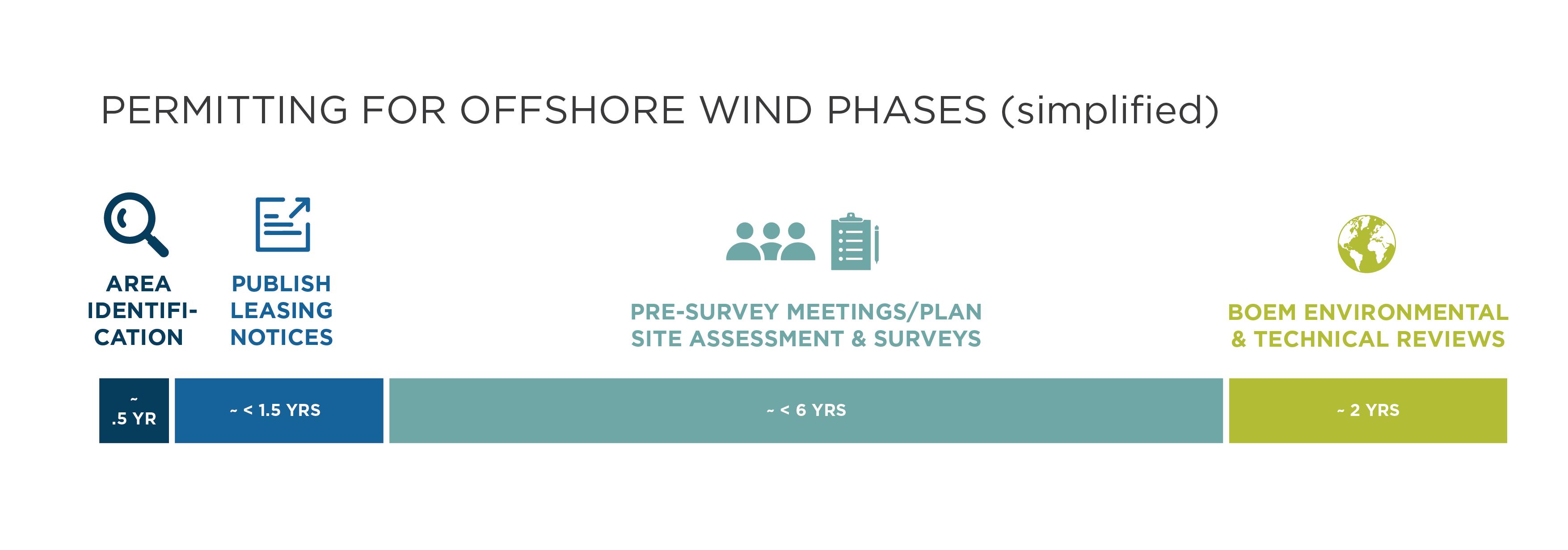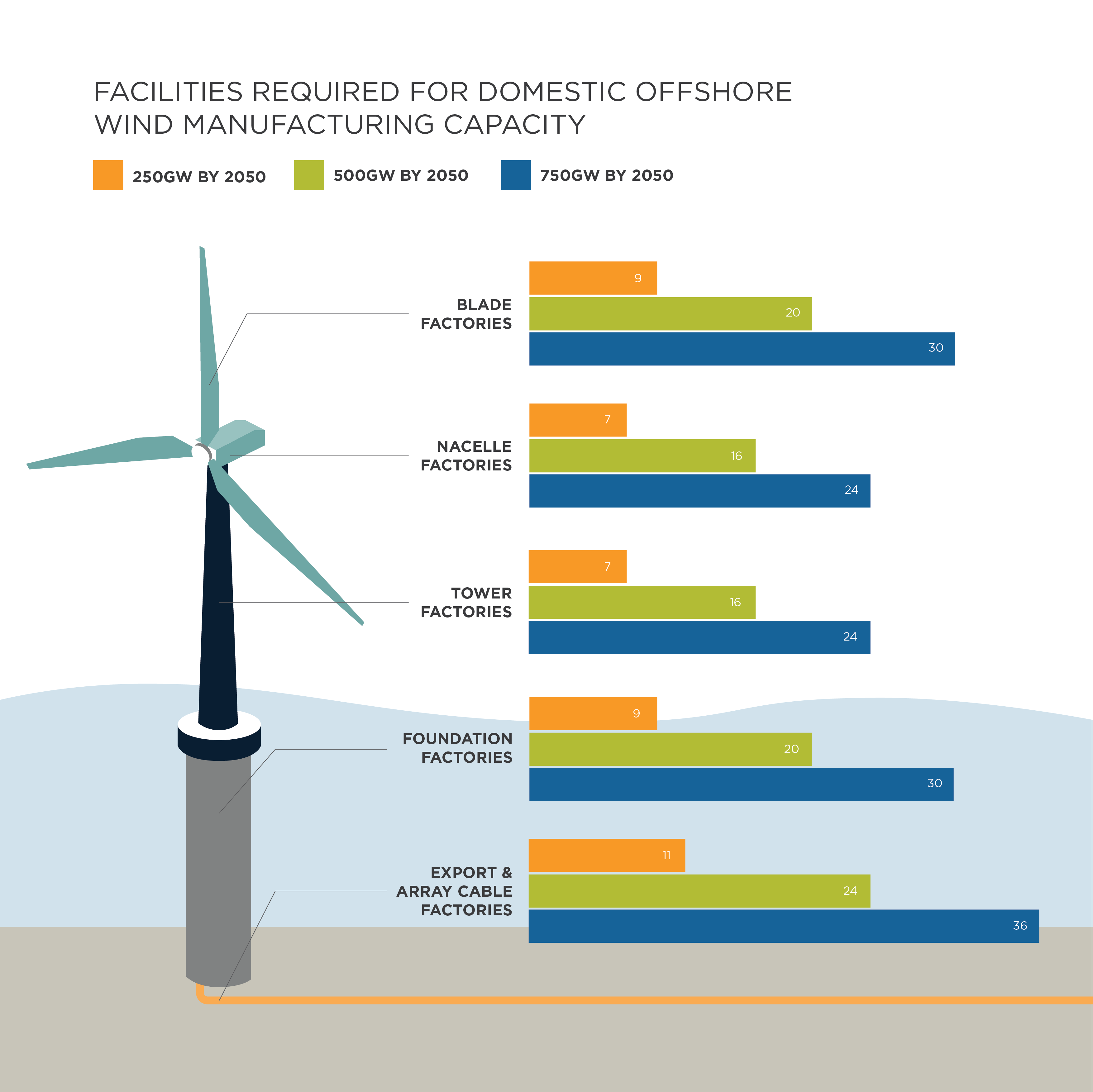This piece was authored by Paulina Vazquez Robles, an 2023 summer communications intern with Energy Innovation
The U.S. has some of the world’s best offshore wind resources, but we’ve barely begun to tap into them– to date, only seven offshore wind turbines are spinning in U.S. waters. But harnessing the country’s tremendous offshore wind potential is necessary to hit our climate targets while creating huge numbers of jobs and building a 21st century clean energy economy.
A new report– the 2035 and Beyond: Abundant, Affordable Offshore Wind Can Accelerate Our Clean Electricity Future report—examines offshore wind’s potential benefits and what we need to do to bring them to fruition. Investing in offshore wind could diversify power supply, bring economic growth, and cut climate pollution. In fact, by 2050 offshore wind could create up to 390,000 new jobs and supply 10 to 25 percent of the country’s electricity. But the next decade is critical for laying the groundwork for offshore wind’s growth.
Getting steel in the water
For an ambitious offshore buildout to be feasible, federal and state governments must support the growth of a domestic supply chain and facilitate offshore wind development. Ensuring access to the equipment needed to build an offshore wind farm and revitalizing ports to be suitable for offshore wind construction are key.
State governments can aid in the transportation and construction of offshore wind turbines by investing in ports, making them accessible for offshore wind. The offshore wind site identification process is also an area where federal and state governments can provide assistance. Facilitating the permitting process through additional funding and increasing baseline data collection before leasing can help provide certainty for developers, environmental organizations, and fisheries to support the industry’s growth.

Soliciting stakeholder feedback will also play an important role in harnessing the country’s offshore wind resources. Federal and state governments should take deliberate steps to include nearby communities in the planning process. Coastal areas, Tribes, fishing groups, and environmental organizations, among others, should take advantage of opportunities to provide input on proposed offshore wind projects, and the federal government should provide funding to help underrepresented groups participate. Including these voices in the early stages of planning will help ensure successful projects while ensuring strong community support.
Training an offshore wind workforce
Offshore wind can also play an important role in a just energy transition by providing new opportunities for legacy fossil fuel workers. Federal and state governments can help facilitate this transition by creating training programs to provide the needed skills and knowledge to workers for offshore wind jobs. Offshore oil and gas workers can play an important role in offshore wind construction, as they have many transferable skills and knowledge needed to build ocean energy infrastructure.

Reaping offshore wind’s benefits
The benefits of establishing an offshore wind industry to the U.S are abundant. Investing in offshore wind would diversify U.S. electricity supplies, helping to create a more reliable and resilient grid and helping us meet our climate goals. As the demand for electricity grows, it’s important to have different sources of energy to reduce risks. Offshore wind complements solar and land-based wind well by generating significant power particularly at times when the sun is going down and consumers increase electricity use. It also blows strong and steady, with many offshore wind sites so productive that they can generate electricity at their maximum output more than half the time. This output is on par with or even exceeds that of many fossil fuel plants – in 2021, coal plants on average only produced their maximum power 46% of the time for land-constrained states on the East Coast, it also offers opportunities to harness clean energy that don’t otherwise exist.
Offshore wind also offers a generational economic opportunity, as it can create jobs for both local communities and in land-locked states where offshore wind components can be manufactured—there could be up to 390,000 offshore wind jobs by 2050. Much of that comes from building a domestic supply chain– dozens of new manufacturing facilities are needed to support a robust U.S. offshore wind industry.

Investing in offshore wind could help the U.S accomplish its energy goals, provide economic growth, and help to diversify power supply. However, to attain these benefits both state and federal governments need to support offshore wind development, and the coming decade is key for laying the foundation for a growing industry. Our economy will lose out on this opportunity and our climate goals are at risk if we don’t take action now.